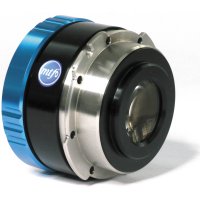1) MLU + Liveview on an SLR does not allow you to hold the camera up to your eye
unless you design a hybrid VF or use some comical eye loupe on the back LCD. In short, this (below) isn't what I want to do as my default shooting posture. It's a nice trick to have, esp. with an articulating screen. But I overwhelmingly prefer the VF and a more stable shooting posture.
2) An SLR design -- even with MLU + liveview -- cannot adapt other people's lenses. You cannot bolt a Nikkor 14-24 2.8 or 105 f/1.4 on an EF mount... but you might be able to with a thin mount.
I take your point that size is (somehwat idiotically) a huge driver for reducing the flange distance. Who wants all the headaches of a new mount to save 1 measly inch? But to say that SLR + MLU can do everything a mirrorless camera can is simply not so.
- A


